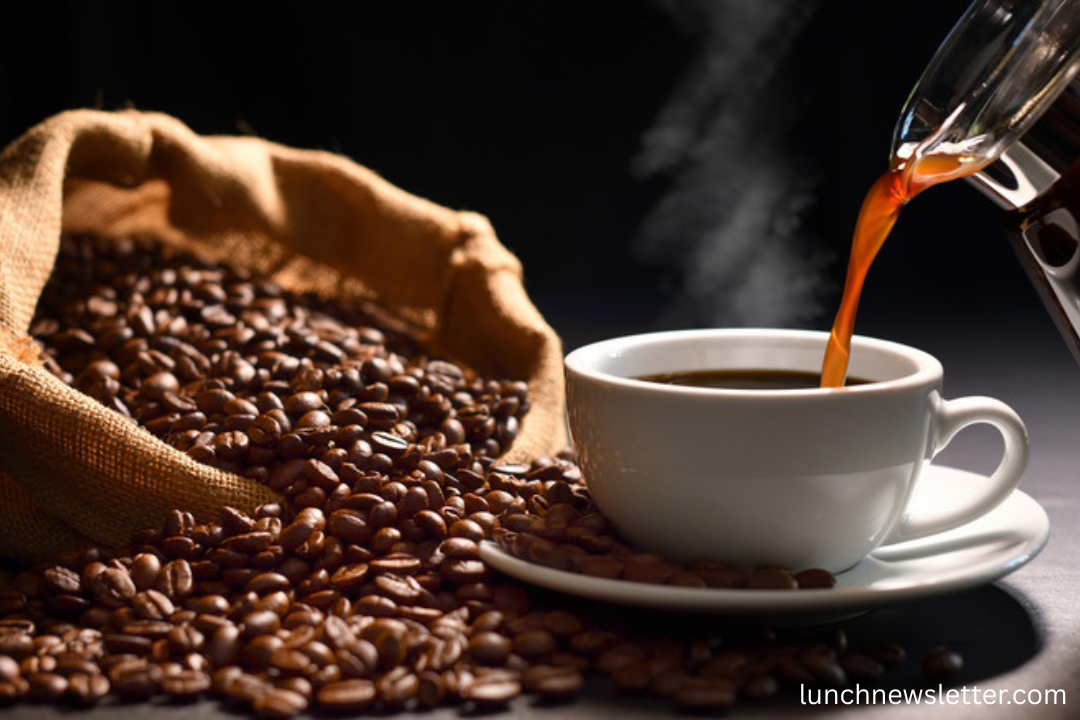Coffee is one of the most beloved beverages worldwide, enjoyed by millions every day. However, have you ever noticed that your coffee tastes different after sitting for a while? Whether it’s your morning brew, an afternoon pick-me-up, or a forgotten cup left on the counter, coffee seems to change in flavor and aroma as time passes. The reasons behind this shift are rooted in both science and chemistry. This article explores why coffee tastes different over time, diving into the processes that cause flavor changes, how temperature affects it, and the best ways to preserve its taste.
The Chemistry of Coffee – What Happens After Brewing?
After brewing, coffee undergoes a variety of chemical reactions that alter its taste. Freshly brewed coffee is packed with complex compounds that contribute to its flavor profile. These compounds start to break down immediately after brewing, which results in noticeable changes in flavor.
The Role of Volatile Compounds
When coffee is freshly brewed, it contains volatile compounds responsible for its aroma. These compounds, such as aldehydes and esters, are released when hot water interacts with ground beans. The aromatic oils and gases are at their peak immediately after brewing, providing a rich, fresh smell and flavor. As time passes, the heat and exposure to air cause these volatile compounds to evaporate, diminishing the coffee’s aroma and altering its taste.
Oxidation – The Flavor Killer
As coffee sits, oxidation plays a significant role in deteriorating flavor. Oxidation occurs when the oxygen in the air interacts with coffee compounds. For instance, polyphenols (the compounds that contribute to coffee’s bitterness) begin to break down, leading to a decrease in flavor complexity. As a result, coffee starts to taste flat, stale, or bitter after sitting for some time.
Temperature and Its Impact on Coffee Flavor
One of the primary factors influencing the change in coffee flavor over time is temperature. As coffee cools, different compounds in it are affected in varying ways, leading to changes in its taste.
Hot Coffee – Bold and Bitter
When coffee is freshly brewed and served hot, its flavor is bold and concentrated. The heat enhances the release of certain oils and compounds that contribute to the rich and full-bodied taste. However, as the coffee cools down, these compounds dissipate, and other bitter elements become more pronounced. The result is a more bitter and less flavorful experience as the coffee loses its complexity.
Lukewarm Coffee – Losing Freshness
Once coffee reaches a lukewarm temperature, its flavor profile becomes less vibrant. The oils that give coffee its richness begin to solidify while the volatile compounds continue to evaporate. This phase is when coffee starts tasting stale and lacks its original brightness and smoothness.
Cold Coffee – A Different Experience
Cold coffee, whether from a cold brew or leftover hot coffee that’s cooled down, brings out different flavors. The acids in coffee are less prominent when chilled, and some of the bitterness softens. However, cold coffee may taste flatter or more watery because many of the compounds that give it depth have already evaporated or broken down. This is why cold coffee often requires extra flavoring, like sweeteners or cream, to mask the changes in taste.
The Influence of Time on Coffee Flavor
Not only does temperature affect how coffee tastes, but the passage of time also plays a role in flavor evolution. As coffee sits, it undergoes chemical processes that change its taste even further.
Freshly Brewed Coffee – The Best Taste Window
Immediately after brewing, coffee is at its peak. The flavors are complex, balanced, and aromatic. The oils from the beans are released in full force, adding to the richness and smoothness of the brew. However, this optimal flavor profile only lasts for a short period. Coffee that is consumed within the first 15–30 minutes after brewing will taste the freshest.
30 Minutes to 1 Hour – Declining Freshness
As coffee sits for 30 minutes to an hour, the volatility of its compounds begins to diminish, and oxidation sets in. During this time, the coffee becomes less flavorful, and the initial boldness starts to fade. Depending on the brewing method, this could lead to a slight bitterness or a flat taste.
After 1 Hour – Stale Coffee
Once coffee has been sitting for more than an hour, the impact of oxidation is much more apparent. The flavors degrade significantly, and coffee begins to taste stale. The acidity that provides brightness and liveliness fades, and the bitterness may become overpowering. If the coffee has been sitting in a carafe or open container, it will also begin to absorb odors from the air, which further compromises its flavor.
How to Preserve the Freshness of Coffee

To avoid the decline in flavor and preserve the richness of coffee, consider these tips:
Drink It Immediately
The best way to enjoy fresh coffee is to drink it shortly after brewing. Since the optimal flavor window for coffee is relatively short, it’s best to consume it within 15–30 minutes of brewing for the best taste.
Use a Thermos or Insulated Mug
If you want to keep your coffee hot without letting it deteriorate too quickly, use a thermos or insulated mug. These containers help maintain the temperature and keep your coffee from cooling down too fast, preserving the flavor longer.
Brew Fresh Coffee as Needed
Instead of brewing a large batch of coffee to keep throughout the day, brew smaller amounts more frequently to maintain freshness. This approach ensures each cup is as flavorful as the first.
Use a Coffee Warmer
If you have to keep your coffee hot for a while, consider using a coffee warmer or an insulated coffee pot. These options maintain the coffee’s temperature without exposing it to the open air, which accelerates oxidation.
Cold Brew for a Different Experience
If you prefer chilled coffee, consider making a cold brew. Compared to traditional hot-brewed coffee, cold brew is less affected by time. It is smoother and less acidic and can be stored for a few days without significantly losing flavor.
Factors That Affect Coffee Taste Over Time
Aside from time and temperature, several other factors influence how coffee changes in flavor as it sits.
Grind Size and Brewing Method
The grind size of your coffee beans and the brewing method you choose will impact how quickly flavor compounds are extracted. For example, a fine grind used in espresso machines extracts flavors more rapidly than a coarser grind used for French press brewing. A faster extraction can result in a more pronounced flavor that might degrade faster than a slower extraction.
Coffee Bean Quality
The quality of the beans you use plays a crucial role in how long coffee retains its flavor after brewing. Fresh, high-quality beans will produce better-tasting coffee that holds up longer than lower-quality beans.
Water Quality and Temperature
Water quality and brewing temperature also significantly affect the flavor. Water that is too hot or too cold can extract undesirable flavors from the beans. Using filtered water and keeping your brewing temperature within the ideal range (195°F–205°F) ensures the best flavor extraction.
Frequently Asked Questions (FAQ’s)
What makes coffee taste different as it sits?
Coffee’s flavor changes over time due to oxidation and the evaporation of volatile compounds. As coffee cools, aromatic oils and gases dissipate, leading to a flat or stale taste. Exposure to air and heat accelerates these changes, affecting the overall flavor profile.
Why does hot coffee taste better than cold coffee?
Hot coffee tastes more vibrant because heat helps release aromatic compounds that contribute to its flavor and fragrance. As coffee cools, these compounds dissipate, and the bitterness can become more pronounced, resulting in a less appealing taste.
How long can coffee sit before it tastes terrible?
Coffee’s peak flavor occurs within the first 15 to 30 minutes after brewing, and after that, oxidation and cooling cause the flavor to degrade. By the one-hour mark, coffee generally starts to taste stale or bitter.
Can I reheat coffee without ruining the taste?
Reheating coffee can negatively affect its taste, as it may become more bitter and lose its complexity. If you need to reheat coffee, do so gently on low heat to minimize flavor degradation. Alternatively, consider using a thermos to keep coffee warm.
Why does cold brew coffee taste different from regular coffee?
Cold-brewed coffee is brewed with cold water over a longer period, which extracts fewer bitter compounds and acids. This results in a smoother, less acidic flavor that can last longer than traditional hot-brewed coffee.
How can I keep coffee fresh longer?
To maintain coffee’s freshness, drink it immediately after brewing or store it in an insulated mug or thermos. Avoid leaving coffee exposed to air for extended periods, as oxidation will degrade the flavor.
Does the type of coffee bean affect how it tastes over time?
Yes, the quality and freshness of the coffee beans significantly impact how long the flavor lasts. Fresh, high-quality beans maintain their flavor for a more extended period compared to older, lower-quality beans.
What’s the best way to store leftover coffee?
If you need to store leftover coffee, keep it in an airtight container in the refrigerator. Cold brew is an excellent option if you prefer to drink coffee cold, as it stays fresh for a more extended period compared to hot-brewed coffee.
Conclusion
Understanding why coffee tastes different over time is crucial for maximizing your enjoyment of the beverage. From the immediate burst of flavor after brewing to the slow degradation caused by oxidation and temperature changes, coffee undergoes significant transformations. To preserve its best qualities, consume coffee soon after brewing, store it in insulated containers, or opt for cold brew for a smoother, longer-lasting flavor. By paying attention to the time, temperature, and other factors, you can ensure that each cup of coffee is as fresh and flavorful as possible.

